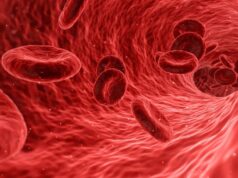
Among Chinese patients with minor, non-disabling stroke presenting <4.5 hours from symptom onset, dual antiplatelet therapy (DAPT) has been found to be non-inferior to intravenous thrombolysis (IVT) with alteplase regarding 90-day functional outcomes.
Thanh N Nguyen (Boston University Chobanian and Avedisian School of Medicine, Boston, USA), who presented these preliminary findings on behalf of Hui-Sheng Chen (General Hospital of Northern Theater Command, Shenyang, China) and the ARAMIS trial investigators at the 2023 International Stroke Conference (ISC; 8–10 February, Dallas, USA), noted that—given its ease of administration, low cost, safety profile and association with less intensive monitoring—these findings support DAPT use in this patient population.
Despite the fact that mild strokes (National Institutes of Health Stroke Scale [NIHSS] score ≤5) comprise roughly half of all ischaemic strokes in the USA, the benefits of IVT in these patients are not fully understood, Nguyen initially posited. And, while prior research like the POINT and CHANCE studies—both published in the New England Journal of Medicine—have confirmed efficacy and safety of DAPT in minor stroke patients presenting within 12 and 24 hours, respectively, recent American and Chinese stroke association guidelines advocate treatment with intravenous alteplase in patients who present less than three hours from symptom onset.
As such, the multicentre, randomised, non-inferiority ARAMIS trial was set up to evaluate DAPT (300mg clopidogrel plus 100mg aspirin, then 75mg clopidogrel plus 100mg aspirin for 10–14 days, followed by guideline-based antiplatelet treatment up to day 90) versus IVT (0.9mg/kg alteplase followed by guideline-based antiplatelet treatment up to day 90) in acute minor stroke patients presenting within 4.5 hours of symptom onset and without clearly disabling deficit. The key component of the inclusion criteria was an acute ischaemic stroke with an NIHSS score ≤5.
Nguyen relayed that ARAMIS’ primary endpoint was an excellent functional outcome (modified Rankin Scale [mRS] 0–1) at 90 days. The trial’s secondary endpoints included 90-day favourable functional outcome (mRS 0–2); 90-day ordinal mRS shift; 24-hour NIHSS score change—including early neurological improvement or deterioration—90-day all-cause mortality; and symptomatic intracranial haemorrhage (ICH; defined as bleeding on computed tomography [CT] with NIHSS increase ≥4).
Between October 2018 and April 2022, 760 eligible patients were randomised, with 393 allocated to receive DAPT and 367 allocated to receive alteplase. A total of 87 patients crossed over from DAPT to alteplase, while 60 patients did the opposite, meaning 284 and 292 patients, respectively, received their allocated intervention. A total of 369 patients in the DAPT group (median age=65 years, 69.5% male) and 350 in the alteplase group (median age=64 years, 68.4% male) constituted the trial’s modified intention-to-treat (ITT) population, and the two groups were well balanced regarding baseline characteristics.
Detailing the primary endpoint finding in ARAMIS, Nguyen reported preliminary findings; a 93.8% rate of mRS scores of 0–1 at 90 days with DAPT, compared to 91.4% with alteplase, noting a 2.3% risk difference of having an excellent 90-day functional outcome in the modified ITT population. With the unadjusted lower limit of the one-sided 97.5% confidence interval being -1.5%, the trial therefore met its primary endpoint, exceeding the prespecified non-inferiority margin of -4.5%. ARAMIS’ per-protocol and as-treated analyses yielded similar results, Nguyen further stated.
In addition, there was overall parity between many of the trial’s secondary endpoints—although early neurological deterioration (≥2 NIHSS point decline) within 24 hours was observed in a higher proportion of patients in the alteplase group (9.1%) than in the DAPT group (4.6%). Regarding safety outcomes, Nguyen informed the ISC audience of symptomatic ICH rates of 0.3% and 0.9% in the DAPT and alteplase groups, respectively, while bleeding events of any kind occurred in 1.6% and 5.4% of patients.
Prior to concluding, the speaker acknowledged two limitations of the ARAMIS trial, the first being the fact that some US guidelines were updated during the course of the study, establishing DAPT over alteplase as a standard treatment in the target population; and the second being the 20.4% crossover rate between the two study groups, which “may have affected the integrity of the recruitment and consent process”. However, regarding the latter point, Nguyen also averred that the demonstration of non-inferiority with DAPT is still “robust”, given the consistency of results across modified ITT, per-protocol and as-treated analyses.
After reiterating support for the use of DAPT in the minor-stroke patient population based on ARAMIS’ findings, the speaker concluded with a nod to the global TEMPO-2 study—a randomised controlled trial comparing IVT with 0.25mg/kg of tenecteplase versus standard, antiplatelet-based care in transient ischaemic attack (TIA) or minor stroke patients presenting <12 hours from symptom onset.














